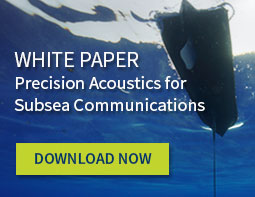Piloting a Course to Mission Success
Liquid Robotics — July 25, 2017
One of the core ways we help support our customers’ missions is with our piloting services. So what exactly does a Wave Glider pilot do? Eric Niven, one of our most experienced Mission Support Specialists, and Marc Sallaberry, who leads our Mission Support Operations team, describe the pilot’s role and share examples of how pilots can help navigate the way to mission success.
Let’s talk piloting. Walk me through a day in the life of a Wave Glider pilot.
Eric Niven: We change shifts every 12 hours. The first thing the incoming pilot does is to check the health of each Wave Glider: review any alarms the vehicle has sent; review battery power consumption and generation; and look at the location to see if there’s any kind of danger from ships, coastlines or other hazards. Once we make sure everything’s going smoothly with the core system, then we look at the data to ensure it is being collected, transmitted, and stored properly. We essentially put ourselves at the helm of the ship, doing all the things you would do on a research vessel or military vessel, except we’re doing it remotely.
Marc Sallaberry: The ocean is an unpredictable place to operate. In the mission plan, we lay out a lot of different if/then scenarios for things like navigation, weather, and battery power, to help the pilot make decisions as situations arise. Some specific situations may require escalation, of course, but the goal is to execute the mission without having to continually go back to the customer other than for status updates.
Eric: The three main things that we worry about are vessel traffic if we are in a busy area; bathymetry if we are in a coastal area; and environmental factors like wind, weather, solar, and surface swell. A lot of what we do is aimed at gaining environmental awareness, either through the instruments aboard the Wave Glider, or by checking various weather agencies and satellite based observations.
Marc: We’re staffed 24/7, and our pilots are very experienced; they’ve been doing this for years. During periods of intense weather, we know we need to have someone watching constantly, so we’ll make sure we’re staffed appropriately. if we know the weather is going to be cloudy for many days, we’ll create a duty-cycling plan to manage the power. we have very quick and efficient escalation paths for when unexpected events occur. We’re always looking at the forecasts for the next few days to give ourselves the best chance for success.
Mission deviations happen all the time and often it’s for a good reason. Sometimes after four or five days of a mission the customer realizes the capability of the system and they want to do more with it, which is a great thing.
Can you give me some examples of missions where having an experienced pilot really made a difference?
Eric: We were doing turbidity monitoring off Australia, facing really strong currents and moving through islands and shoals and sandbars. We can see in the Wave Glider Management Software (WGMS) that the Wave Glider is getting blown off course. In order to navigate a path through, we had to continuously compare Google map images with satellite photos, and predict how the currents would change based on the patterns and data we were seeing. It really was a rollercoaster, and I think the customer was really happy that first of all our team kept the Wave Glider safe, and second of all that the data was good.
Another good example is when we were piloting the Wave Glider as it swam Northwest from Pitcairn Islands to the Big Island of Hawaii (a 3,000 mile journey!). We needed to look at currents to try to predict whether should try to push North or if it was time to go West, and we needed to avoid having the currents pull us backwards too much. I have a master’s in marine science, and so I personally enjoyed how that mission involved a lot of pure oceanography.
What types of missions or customers benefit most from piloting services?
Marc: It really depends on what the customer’s mission objective is, and the capabilities of their staff. Many customers have maritime personnel on staff, who understand the ocean and communications with authorities and vessels, and after going through our training class they are well prepared to pilot the Wave Glider. Other customers prefer to use our piloting services, so they can focus on how they will use the data to advance their research or run their business.
Some of the scientific research missions are shorter, anywhere from one week to six weeks. Some customers want to pilot and interact with their vehicles during the day, and then hire us for overnight services because we’re 24/7. And then some will do extended missions where we’re piloting their assets throughout the year.
Anything else you’d like to add?
Eric: I had no idea I’d end up at an engineering robotics company. I thought I’d be balancing between being out on the water and shipping home to see my kids, and I was always kind of worried about that. Here I get the best of both worlds, and can put my marine experience to use in a meaningful way. We’re getting to a place where the marine community and the robotic community are coming together.
Learn more about the services we offer to help ensure your mission is a success.
